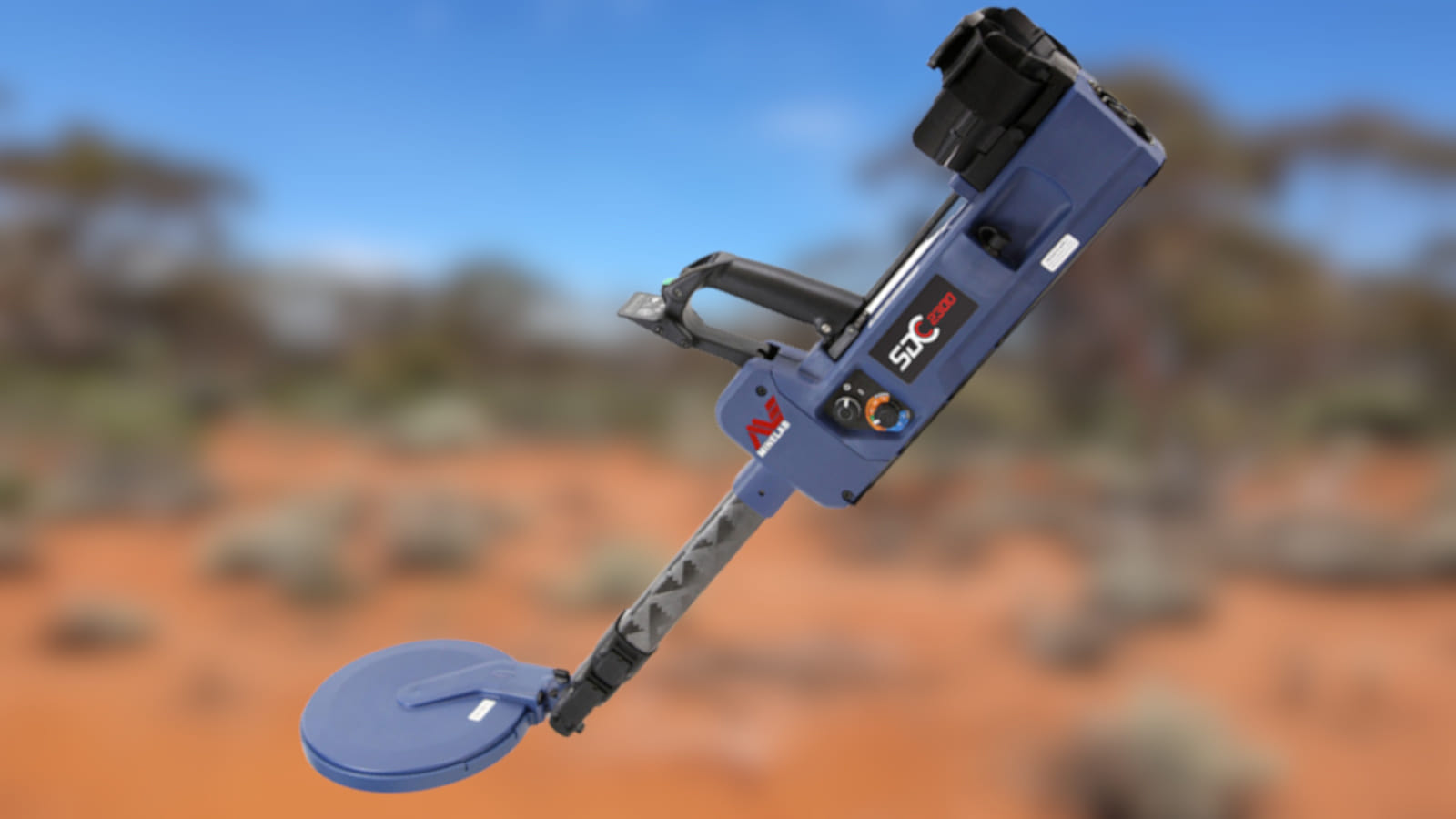
The Minelab SDC 2300 Metal Detector: Pros and Cons
The Minelab SDC 2300 is a compact, high-performance metal detector that has gained popularity among metal detecting enthusiasts, gold prospectors, and treasure hunters. This article aims to outline the pros and cons of using this versatile metal detector, taking into account its waterproofing, sensitivity, design, portability, ease of use, and effectiveness on mineralised soil.
Pros
1. Waterproof
One of the most significant advantages of the SDC 2300 is its waterproof design. The metal detector can be submerged up to 10 feet (3 meters) underwater, making it ideal for searching in rivers, streams, or at the beach. This feature significantly expands the range of environments where it can be used effectively, increasing the chances of finding valuable items.
2. Sensitivity
The SDC 2300 is known for its exceptional sensitivity to small gold nuggets, thanks to its advanced pulse induction technology. It operates at a frequency of 3.7 kHz and uses a 40 ms pulse delay, allowing it to detect gold as small as 0.1 grams. This high level of sensitivity makes it a valuable tool for gold prospectors and treasure hunters who wish to find smaller targets that other detectors might miss.
3. Blue Vacuum
The Blue Vacuum technology utilised by the SDC 2300 ensures that the detector can quickly process and discard iron trash and other unwanted signals. This intelligent discrimination feature allows users to focus on valuable targets, like gold, silver, and other non-ferrous metals, without wasting time digging up worthless junk.
4. Backpack and Portability
One of the standout features of the SDC 2300 is its portability. The compact and lightweight design allows it to be easily carried in the included backpack or other carrying cases. When folded, it measures just 15.5 inches (39.5 cm) in length, making it easy to transport and store when not in use. This small size, combined with its lightweight construction, makes it a popular choice among metal detecting enthusiasts who value convenience and ease of transportation.
5. Ease of Use
The SDC 2300 is designed with ease of use in mind. The detector features simple controls and an intuitive interface that can be quickly mastered by both beginners and experienced users. The quick start guide ensures that you can start searching for treasures right out of the box. The SDC 2300 also has an automatic ground balance feature, making it even easier to use in various environments without having to manually adjust settings.
6. Use on Mineralised Soil
The SDC 2300 excels at detecting valuable targets in highly mineralised soil. Its advanced pulse induction technology enables it to penetrate deep into the ground and provide accurate readings in environments with high mineral content. This is particularly useful for gold prospectors who often search in areas with high levels of mineralization, as well as for treasure hunters exploring old mining sites or other challenging locations.
Cons
1. Price
One of the primary drawbacks of the SDC 2300 is its price. The detector is considered to be on the higher end of the price spectrum, which may put it out of reach for some hobbyists and beginners. However, its exceptional performance, advanced features, and durability can make it a worthwhile investment for those who are serious about metal detecting and are willing to spend the extra money.
2. Limited Coil Options
The SDC 2300 comes with a fixed 8-inch mono coil. While this coil is effective in most situations, the lack of interchangeable coils can be seen as a limitation, especially for those who want to customise their detector for specific types of hunting or target sizes. This may be a deal-breaker for some users who require the versatility of different coil options for different search scenarios.
3. No Visual Display
The SDC 2300 features an audio-only target response system, meaning it does not have a visual display to provide target identification or depth information. While some users may prefer the simplicity of an audio-only system, others may find the lack of visual cues frustrating. This lack of a display can make it more challenging to differentiate between valuable targets and junk items, particularly for inexperienced users.
4. No Wireless Audio Option
The SDC 2300 does not come with a wireless audio option. This means that users must rely on the included wired headphones or an external speaker, which can be cumbersome and restrict movement. Many modern detectors offer wireless headphone options, making this a notable omission for the SDC 2300. Users who prioritise freedom of movement and the convenience of wireless audio may be disappointed by this limitation.
5. Single Frequency
The SDC 2300 operates on a single frequency of 3.7 kHz. While this frequency is effective for detecting small gold nuggets and other valuable targets, it may not be the best choice for all types of metal detecting. Multi-frequency detectors can offer better performance and versatility, allowing users to adjust the operating frequency to better suit the target type and environmental conditions. This lack of frequency options may be seen as a disadvantage for those who require a more versatile detector.
Conclusion
The Minelab SDC 2300 metal detector boasts an array of impressive features, including waterproofing, exceptional sensitivity, portability, and ease of use. Its effectiveness on mineralised soil makes it an ideal choice for gold prospecting and treasure hunting in challenging environments.
>However, the detector's high price point, limited coil options, lack of visual display, absence of wireless audio, and single frequency operation may deter some potential users. It's essential to weigh these pros and cons carefully to determine if the SDC 2300 is the right metal detector for your needs and preferences.